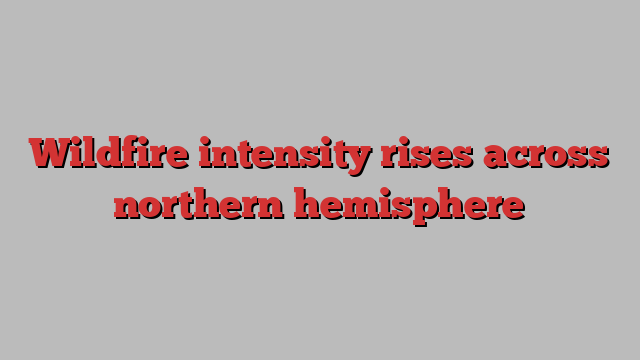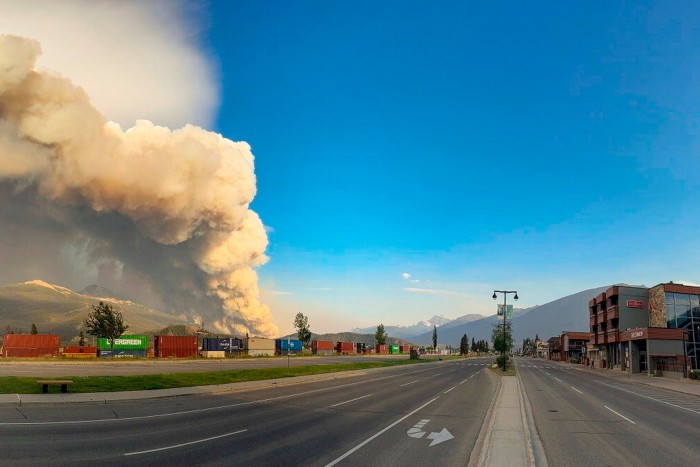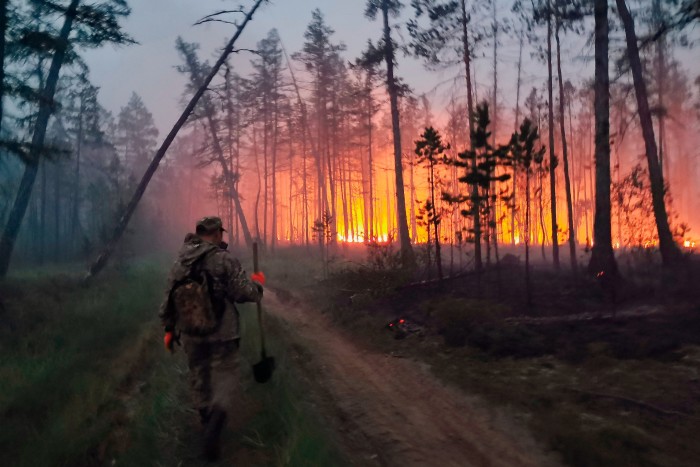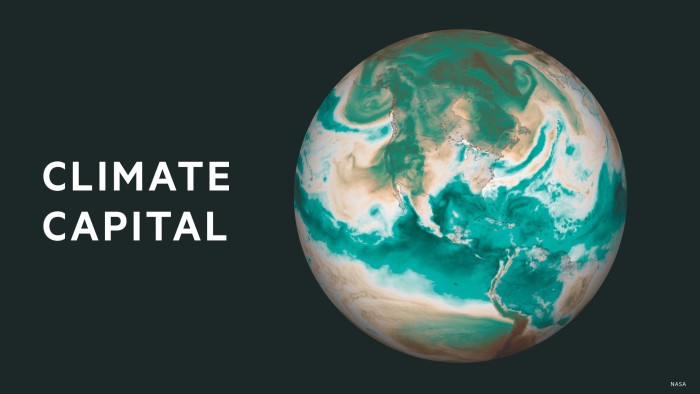
Unlock the Editor’s Digest for free
Roula Khalaf, Editor of the FT, selects her favourite stories in this weekly newsletter.
Wildfires burning across the northern hemisphere in parts of Canada, Russia and the US since the start of the summer have led to a surge in carbon dioxide emissions and smoke trail as their intensity rises.
Scientists at international agencies have been tracking emissions and monitoring a significant increase in daily total fire radiative power, which indicates the intensity of the fires.
Western Canada is enduring an “extreme fire year”, said the Copernicus Atmosphere Monitoring Service (Cams), with estimated emissions at levels comparable with the previous highest years of the past two decades, only surpassed by the record set in 2023.
“These are very intense fires which are producing a lot of emissions,” said Mark Parrington, a senior scientist at Cams. “But if cumulative total emissions continue at this rate, they will only be second to what happened last year.”
Blazes have been tracked across the provinces of British Columbia, Alberta and Saskatchewan, as well as the Northwest and Yukon territories. At the last count, the number of fires in Canada was above the 10-year average.
The fires in Canada have contributed to a “vast amount” of smoke affecting swaths of North America, Nasa reported at the end of last week, with satellite data showing the smoke trail across the mid-western US states.
In the US, the national fire centre this week also reported that 89 large active fires were burning by Wednesday, including 31 in Oregon alone.
Wildfires are common in boreal forests during the summer months. Boreal forests, found across the northern hemisphere and consisting mainly of conifers, are the world’s biggest land-based store of carbon.

While some tree species require fires for their renewal and growth, scientists believe the intensity of the blazes is probably due to climate change resulting in hotter conditions and drier fuel.
“The driver for why the fires can behave in this way and burn for as long as they do is coming from climate change; this is really what is making fires worse,” said Parrington.
At the same time, emissions from wildfires concentrated in eastern Russia have surpassed the June to July total emissions for the past two years.

Wildfires blazed across the Arctic Circle region of the Sakha Republic from the second half of June, and during July the fires spread to the south, as well as the neighbouring Amur Oblast and Zabaykalsky Krai.
Fire emissions in Amur Oblast, at a total of 17.2mn tonnes, were more than the previous record set in 2015.
Cams’ forecasts show a high deterioration of air quality in regions affected by the fires. The aerosol optical depth, which measures how levels of solar radiation reaching the ground are affected by particles in the atmosphere, has been showing particularly alarming values.
From June to July, Cams’ aerosol alerts system also detected particles that were 2.5 micrometres or less in diameter, which can enter the lung barrier or bloodstream, at several times higher than World Health Organization safe exposure limits, in regions including eastern Mongolia, northeastern China and northern Japan.
Long-range smoke transport from the fires has also extended further north across the Arctic Ocean to the high Arctic.
“The tiny little particles in smoke can travel deep into the lungs and irritate them, and set up systemic, body-wide responses,” said Loretta Mickley, a senior research fellow at Harvard’s school of engineering and applied sciences. “Breathing these particles has been linked with heart disease, lung disease and increased risk of strokes.”
Such intense fires are also damaging to peat growth. Peat is a dense organic material that builds up over centuries and stores high levels of carbon, which can be released during wildfires.
“Peat is not easily replenished and because the Earth is warming, who knows how long it will take,” said Mickley. “Meanwhile, all that extra carbon dioxide is in the atmosphere.”
Cartography and data visualisation by Steven Bernard
Climate Capital

Where climate change meets business, markets and politics. Explore the FT’s coverage here.
Are you curious about the FT’s environmental sustainability commitments? Find out more about our science-based targets here
